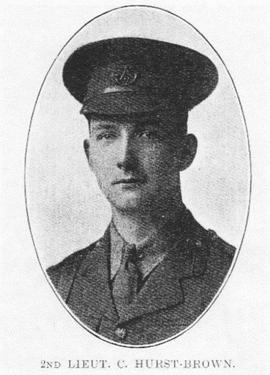Horton, John Corbett, son of Henry Beavan Horton, of Blackheath, Kent, by Jean May, daughter of Thomas Spurr, of King's Lynn, Norfolk; b. Sept. 4, 1899; adm. April 30, 1914 (A); left March 1918; 2nd Lieut. 3rd Batt. R. Sussex Regt. Oct. 30, 1918; a timber merchant, director of B. Horton and Son, Ltd.; Capt. King's Own Yorkshire Light Infantry, Feb. 26, 1940; transferred to Durham Light Infantry; Major; m. Aug. 22, 1931, Eileen Mary Dowman, daughter of William Edward Riley, F.R.I.B.A., of Blackheath, Kent; d. on active service Dec. 3, 1944.
John Corbett Horton was born at Blackheath, London on the 4th of September 1899 the eldest son of Henry Beavon Horton, a timber merchant, and Jean Mary (nee Spurr) Horton of 15, Eliot Vale, Blackheath in London. He was educated at Westminster School where he was up Ashburnham from the 30th of April 1914 to March 1918. He was a member of the 2nd Football XI in 1916 and of the 1st Football XI in 1917 and 1918. He was a member of the Officer Training Corps where he was promoted to Lance Corporal in September 1916, to Corporal in November 1916 and to Company Sergeant Major in November 1917.
He enlisted into the army at Whitehall as Private 60564 on the 5th of April 1918 and was commissioned as a 2nd Lieutenant in the 3rd (Reserve) Battalion, Royal Sussex Regiment on the 30th of October 1918. After the war he joined the firm of B. Horton and Son Ltd, timber merchants, where he was later appointed as a director. He retired to the Territorial Army Reserve of Officers and was promoted to Lieutenant in the 20th (County of London) Battalion, London Regiment (Blackheath and Woolwich) on the 23rd of December 1928. He was promoted to Captain on the 13th of June 1934.
He was married on the 22nd of August 1931 to Eileen Mary Dowman (nee Riley) and they lived at 16, Blackheath Rise, Lewisham and later at 11, Oakcroft Road, Lewisham in London. They had a son, Richard John, born on the 23rd of January 1934.
Following the outbreak of war he was mobilised in 1940 and was appointed as a Captain in the King’s Own Yorkshire Light Infantry on the 26th of February 1940. He transferred to the Durham Light Infantry at the same rank on the 13th of June 1940 where he was appointed as second in command of No. 41 Infantry Training Company based at Brancepeth Castle, County Durham.
He died there following a short illness.
He is buried at St Brandon’s Church, Brancepeth.
